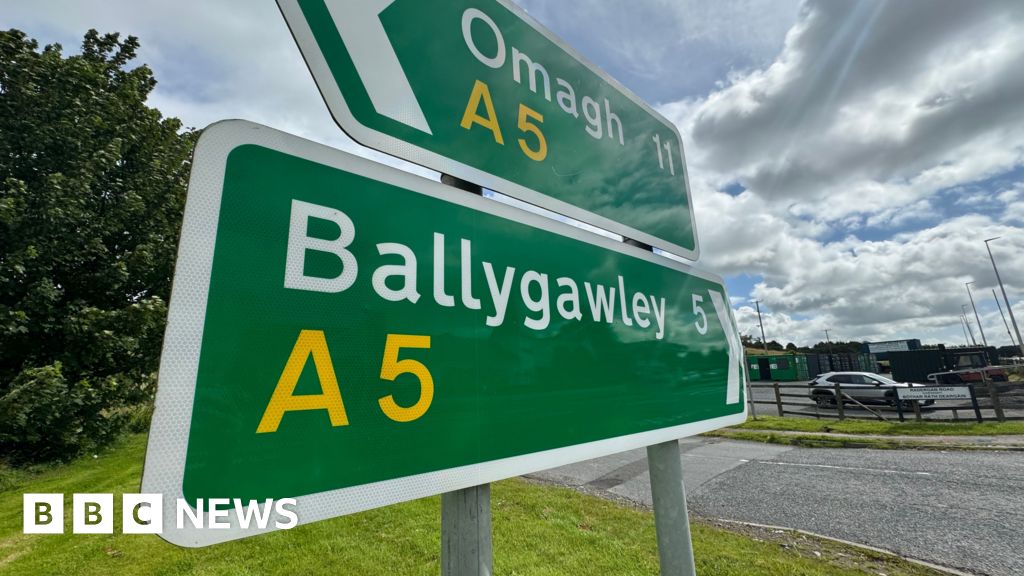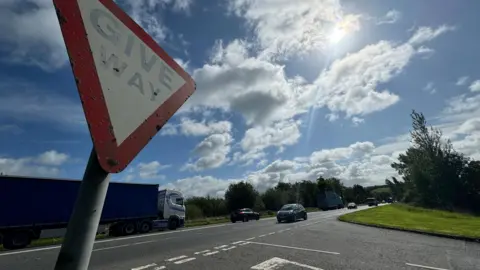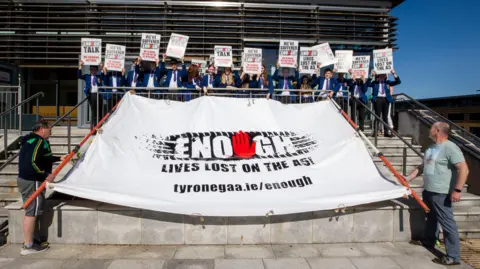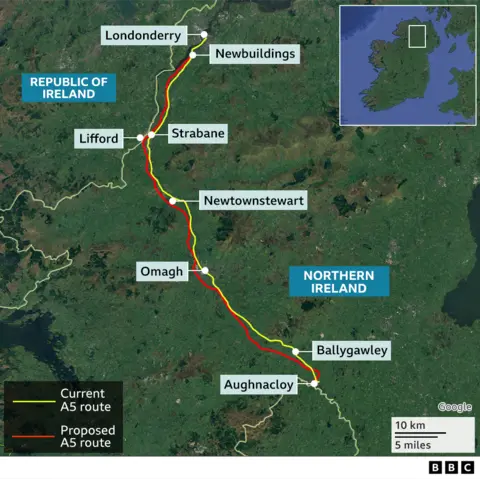Infra
A5 upgrade: Road project gets green light from Stormont

 Pacemaker
PacemakerStormont ministers have approved the long-awaited A5 road upgrade project – including a full dual carriageway.
The total cost of the road upgrade will be about £1.2bn, with €600m (£500m) coming from the Irish government.
Infrastructure Minister John O’Dowd said that work on the project would begin in early 2025 and would completed on a phased basis.
First Minister Michelle O’Neill described it as a momentous day while Deputy First Minister Emma Little-Pengelly welcomed the announcement as good news.
Project planned since 2007
The infrastructure minister confirmed phase one of the scheme would be between Strabane and Ballygawley in County Tyrone, which he said was where many of the deaths and injuries had taken place on the road.
O’Dowd said phase one was half of the total project, 34 miles out of the total 53 miles.
He added that he would make formal decisions on the remainder of the project in due course.
O’Dowd said the total cost of the project was still to be finalised but his department was estimating it would be £1.2 billion.
‘Turning a new chapter’
Michelle O’Neill said the announcement marked the “turning of a new chapter”.
She said work on the road was about saving lives in addition to economic benefits.
Emma Little-Pengelly said the A5 upgrade would be good news for “people in the west of the province and indeed across Northern Ireland”.
She conceded that for land-owners and farmers there would be difficulties.
Alliance infrastructure spokesperson Peter McReynolds said he welcomed the announcement and that it could not come a minute too soon.

Campaigners have lobbied for the new road for some time and have pointed to the fact 54 lives have been lost on the A5 since 2007.
One of them was for Kamile Vaicikonyte, a year 13 pupil, who died in a crash earlier in 2024.
Selina Horshi from the Londonderry Chamber of Commerce said she was “delighted” that the long-awaited project was being approved.
“This huge infrastructure improvement will most importantly save lives by bringing a major arterial route up to the modern safety standards we need and deserve, but will also benefit the economy with better connectivity,” she told the BBC.
Ms Horshi added that “connecting our region from Donegal to Belfast, Dublin and beyond will benefit trade, open up quicker and safer transport routes for freight, encourage FDI and of course benefit tourism”.
 PA Media
PA MediaNiall McKenna, chairman of the A5 campaign group Enough is Enough, said there is a “catastrophic mix” of traffic using the road, as well as many roads which join onto the A5.
Mr McKenna said the £1.2bn price tag was value for money.
“You cannot put a cost on life,” he said.

What is the A5?
The A5 is a vital artery of the Northern Ireland road network, with more than 200 side roads connected to it.
The road is a single carriageway for most of its length, with overtaking lanes in some sections.
It links Londonderry with Aughnacloy in County Tyrone and passes through towns like Sion Mills, Omagh and Strabane.
It connects with the A4 road, linking to Belfast via the M1.
It is also the main north-south route in the west of Northern Ireland, providing a link between County Donegal and Dublin, via the N2 in County Monaghan.

The road has remained largely unchanged since the 1960s, with the exception of some town bypasses, but there has been a huge rise in the number of cars, lorries and agricultural vehicles using it since it was first built.
Official statistics show there has been about a 10% increase in traffic on the road in the last 10 years alone.
An increase of about 30% is forecast over the next 25 years.
Why has the upgrade not gone ahead?
The proposed dual carriageway has faced opposition since it was first announced.
It has been criticised by the campaign group, the Alternative A5 Alliance (AA5A).
Comprised of farmers, landowners and others with an interest in the County Tyrone area, the group was launched in 2009 to oppose the compulsory purchase of land to construct the road.
It has also raised environmental issues around the project.
The group argued that safety improvements can be made to the current road, such as widening sections to allow for safer overtaking.
And it raised a number of planning objections and legal challenges over the years.
After Wednesday’s announcement, the group said it was “unable to make any comment until we have sight of the Public Accounts Committee Report and Mr O’Dowd’s full statement”.
“We understand that the Department for Infrastructure has been in receipt of the PAC Report for the best part of a year but same has not yet been released to the public,” the group said.
“We trust that the report shall now be released.”











